-
CATEGORY ::
- All Seeds /
- All Flower Seeds /
- All Rudbeckia Seeds



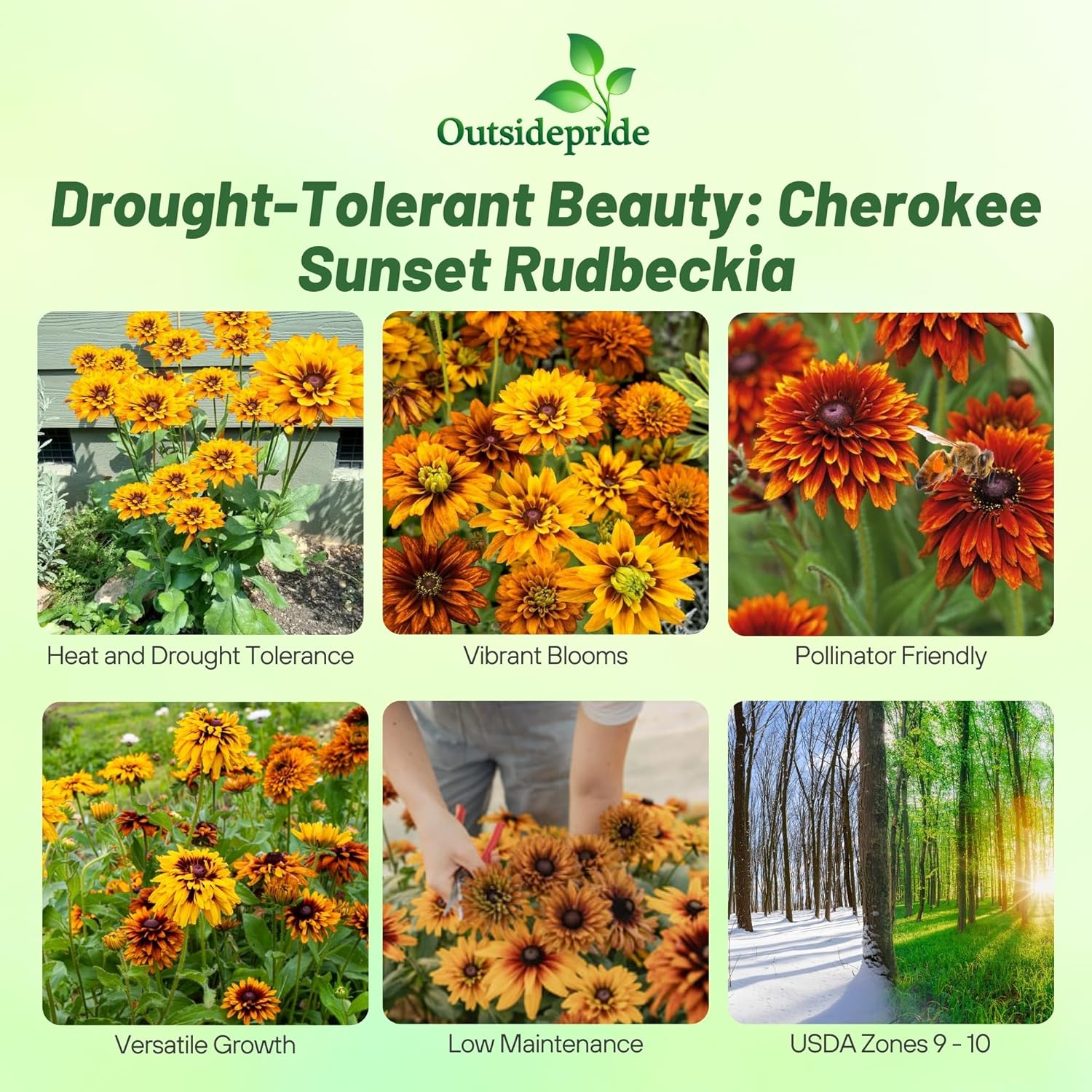

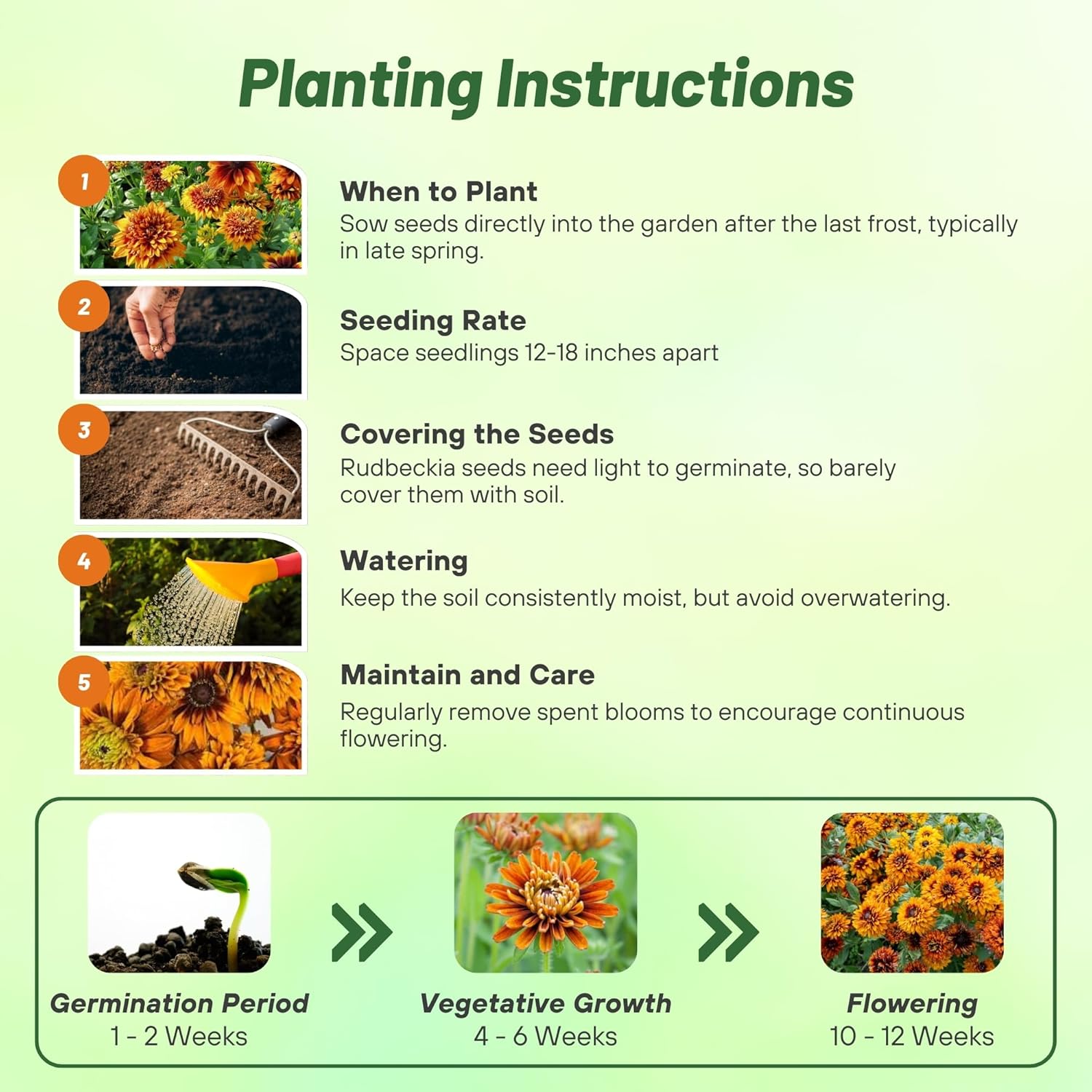




Rudbeckia Hirta Seeds - Cherokee Sunset
About...
Rudbeckia (Rudbeckia Hirta Cherokee Sunset) - Large 4 to 5 inch double flowers in a range of brilliant colors of orange, golden yellow, bronze, chocolate, and various bicolors are produced all summer long. Plants produce mostly double blooms and some singles and semidoubles. Tender perennial in USDA Zones 9 - 10, but they do not need much water.MORE RUDBECKIA OPTIONS
Planting Directions
TEMPERATURE
68 - 72F
AVERAGE GERM TIME
8 - 14 days
LIGHT REQUIRED
Yes
DEPTH
Cover seed very lightly
SOWING RATE
3 - 4 seeds per plant
MOISTURE
Keep seeds moist until germination
PLANT SPACING
12 - 18 inches
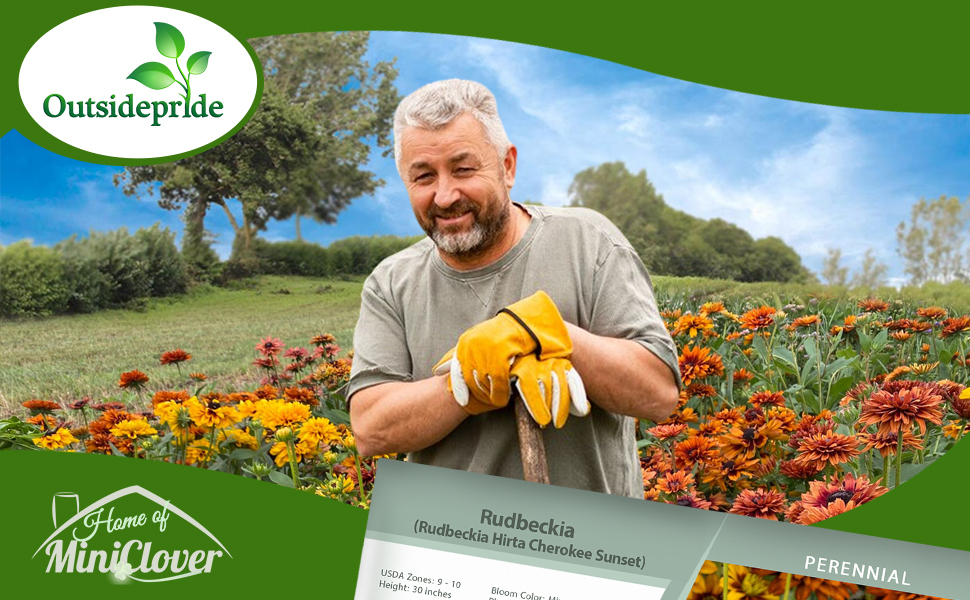

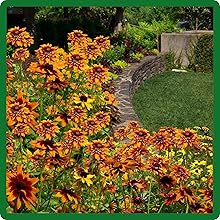


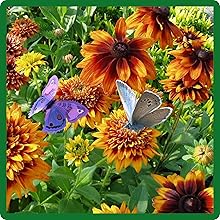

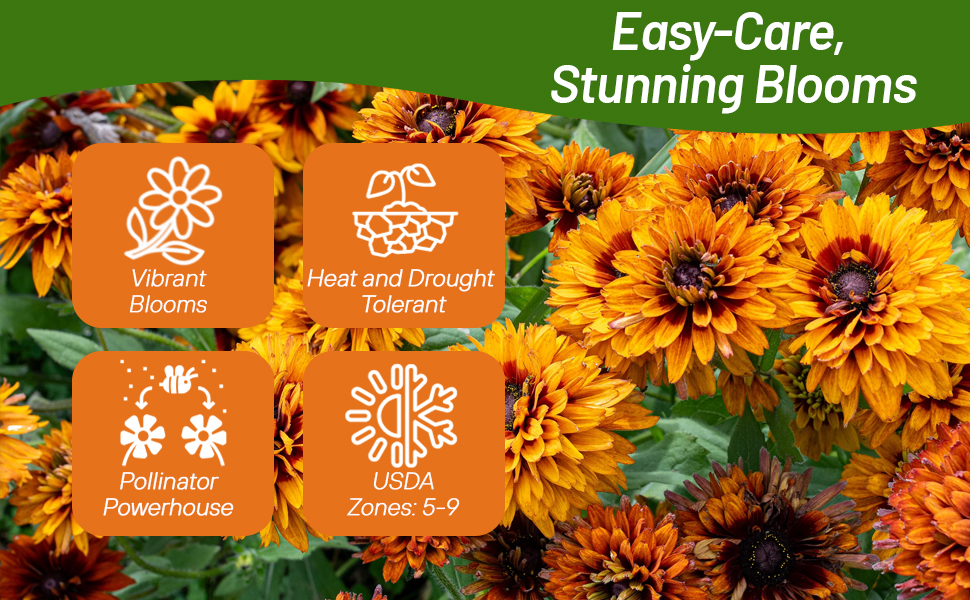

Rudbeckia (Rudbeckia Hirta Cherokee Sunset) - Large 4 to 5 inch double flowers in a range of brilliant colors of orange, golden yellow, bronze, chocolate, and various bicolors are produced all summer long. Plants produce mostly double blooms and some singles and semidoubles. Tender perennial in USDA Zones 9 - 10. Rudbeckia Cherokee Sunset makes an excellent cut flower. Also use this popular xeriscape garden flower for beds, pots, back of borders, or wild, meadow, and cottage garden. Deadhead for more flowers and mulch to conserve soil moisture during high summer. May overwinter in zones 5 - 8, but most often grown as an annual colder climates.
How To Grow Rudbeckia From Seed: Sow Rudbeckia seeds outdoors in the spring after the danger of frost has passed. Prepare soil by loosening the top 1 - 2 inches and removing any weeds. Sow the seeds into the loosened soil and rake in. Walk over the area to gently press the flower seeds into the soil. Keep the flower seeds moist until germination. The plants transplant well and should be spaced 12 - 18 inches apart. They form a clump that will reach 12 inches in width or more. Rudbeckia Flower Care: Deadheading prolongs the bloom season, but they will re-seed themselves readily if you leave a few blooms to go to seed. Watch for seedlings in subsequent years. Established plants are drought tolerant and perfect for xeriscaping.
2002 AAS Flower Winner. This Rudbeckia hirta contains a blend of sunset colors; yellow, orange, bronze, mahogany and shades of these colors. The 4 to 5 inch flowers are double or semi-double and long lasting as cut flowers. Best when grown in the full sun, Cherokee Sunset plants are about 24 to 30 inches tall, spreading about a foot. Many plants are self-supporting and others may need staking. Cherokee Sunset offers gardeners a blend of autumn colors and late season garden performance. Flowering profusely the first year, Cherokee Sunset may over-winter in northern gardens.
Common Questions
What are good perennial companion plants for black-eyed Susan?
Black-eyed Susans and various Rudbeckia plants beautifully enhance the vibrant hues of blue and purple flowers, such as Veronica. They also pair wonderfully with other jewel tones, including Sedum 'Autumn Joy', purple coneflowers, and New England asters.
How do you winterize black-eyed Susan?
Black-eyed Susans are resilient to winter conditions, thriving in USDA zone 3, which means they don’t require winterization. However, the plants do benefit from having their stalks cut back in the fall and being covered with a generous layer of mulch.
Can I use it as a cut flower?
Yes, these flowers are excellent for long lasting cut flowers.
Do flowers attract any pollinators?
Yes, butterflies and song birds are attracted to these flowers.
Do I need to deadhead my spent blooms?
Yes, to encourage a longer bloom season you will need to deadhead any spent blooms.
What are some good ways to use these flowers?
These are spectacular in mass plantings, perennial borders, cottage gardens, cut flower gardens, or in prairies and meadows.
Planting Directions
TEMPERATURE
70F
AVERAGE GERM TIME
7 - 30 days
LIGHT REQUIRED
Yes
DEPTH
Do not cover the seed but press into the soil
SOWING RATE
1/2 ounce per 1,000 square feet or 2 pounds per acre
MOISTURE
Keep seeds moist until germination
PLANT SPACING
12 - 18 inches



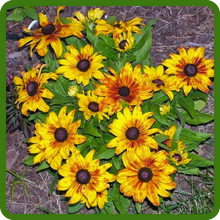
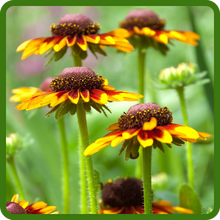

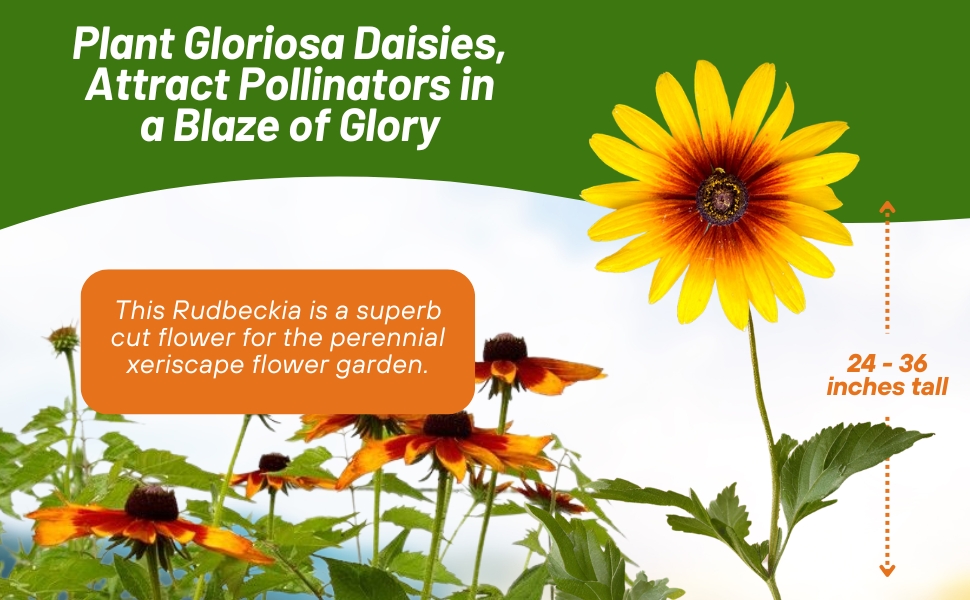

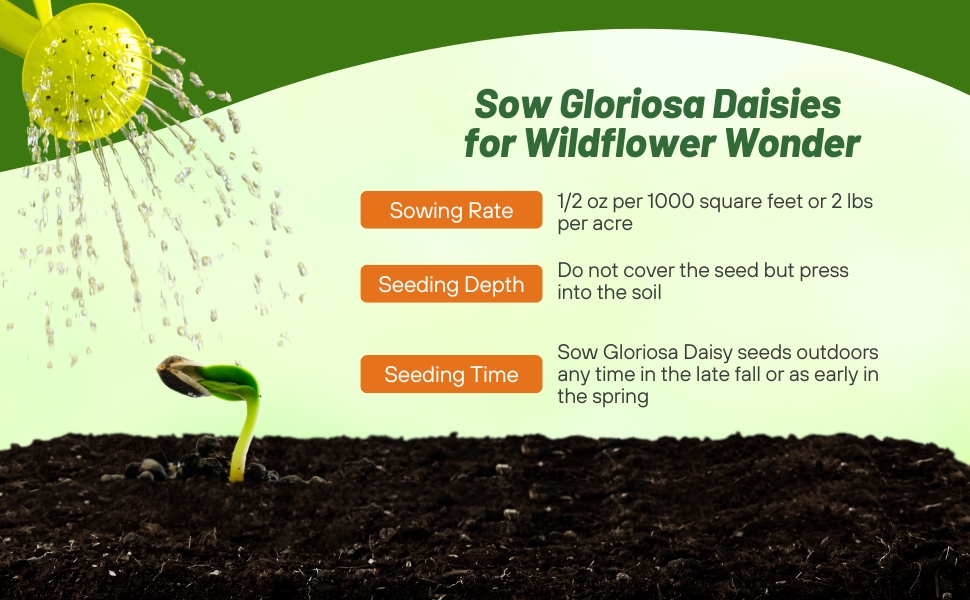
Gloriosa Daisy (Rudbeckia Hirta) - A superb performer for the perennial xeriscape flower garden, Rudbeckia Gloriosa Daisy, is easily propagated from Rudbeckia Hirta seeds, and it offers a rewarding long bloom season with a glorious display of color! Gloriosa Daisy blooms vary from solid gold, bicolors, and doubles. The Gloriosa Daisy drought tolerant plants, a relative of Black-eyed Susan, typically has larger blooms with brown centers and a mahogany red color shooting into yellow outer petals. This flower will grow in most soil types that are well-drained and in sunny settings. This daisy makes a good cut flower, and the more you cut, the more blooms are produced!
Growing drought tolerant Gloriosa Daisy seed is simple and very rewarding since you get to practice water conservation. Sow Gloriosa Daisy seeds outdoors any time in the late fall or as early in the spring as the ground can be cultivated. Prepare soil by loosening the top 1 - 2 inches and removing any weeds. Sow the Rudbeckia Hirta seeds into the loosened soil and rake in. Walk over the area to gently press the wildflower seeds into the soil. Keep the Gloriosa flower seeds moist until germination. The plants transplant well and should be spaced 12 - 18 inches apart. The plants form a clump that will reach 12 inches in width. Deadheading prolongs the bloom season, but Gloriosa Daisies will re-seed themselves readily if you leave a few blooms to go to seed. Watch for seedlings in subsequent years. Rudbeckia Hirta flowers will not bloom much the first year the wildflower seeds are sown. Subsequent years will bring many more blooms.
Common Questions
What are good perennial companion plants for black-eyed Susan?
Black-eyed Susans and various Rudbeckia plants beautifully enhance the vibrant hues of blue and purple flowers, such as Veronica. They also pair wonderfully with other jewel tones, including Sedum 'Autumn Joy', purple coneflowers, and New England asters.
How do you winterize black-eyed Susan?
Black-eyed Susans are resilient to winter conditions, thriving in USDA zone 3, which means they don’t require winterization. However, the plants do benefit from having their stalks cut back in the fall and being covered with a generous layer of mulch.
Can I use it as a cut flower?
Yes, these flowers are excellent for long lasting cut flowers.
Do flowers attract any pollinators?
Yes, butterflies and song birds are attracted to these flowers.
Do I need to deadhead my spent blooms?
Yes, to encourage a longer bloom season you will need to deadhead any spent blooms.
What are some good ways to use these flowers?
These are spectacular in mass plantings, perennial borders, cottage gardens, cut flower gardens, or in prairies and meadows.
Planting Directions
TEMPERATURE
70F
AVERAGE GERM TIME
7 - 30 days
LIGHT REQUIRED
Yes
DEPTH
Do not cover the seed but press into the soil
SOWING RATE
1/2 ounce per 1,000 square feet or 2 pounds per acre
MOISTURE
Keep seeds moist until germination
PLANT SPACING
12 - 18 inches



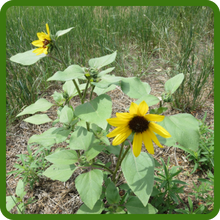





Black-Eyed Susan (Rudbeckia Hirta) - This familiar, yet gorgeous golden yellow wild flower is often seen growing in large colonies along highways, in fields, and in many natural settings. Black-Eyed Susan easily establishes from Rudbeckia Hirta seeds, and it produces clumping, stiff, upright drought tolerant plants. Rudbeckia Black Eyed Susan is native to the eastern United States and is probably the most common of all American wildflowers. They have the characteristic dark brown, domed center which is surrounded by bright, golden yellow petals. Black-Eyed Susan wildflowers thrive in most soils, in full sun, and they forgive neglect. Even though these plants prefer moist soils, they are also quite drought tolerant and can be planted for xeriscape gardening.
Common Questions
What are good perennial companion plants for black-eyed Susan?
Black-eyed Susans and various Rudbeckia plants beautifully enhance the vibrant hues of blue and purple flowers, such as Veronica. They also pair wonderfully with other jewel tones, including Sedum 'Autumn Joy', purple coneflowers, and New England asters.
How do you winterize black-eyed Susan?
Black-eyed Susans are resilient to winter conditions, thriving in USDA zone 3, which means they don’t require winterization. However, the plants do benefit from having their stalks cut back in the fall and being covered with a generous layer of mulch.
Can I use it as a cut flower?
Yes, these flowers are excellent for long lasting cut flowers.
Do flowers attract any pollinators?
Yes, butterflies and song birds are attracted to these flowers.
Do I need to deadhead my spent blooms?
Yes, to encourage a longer bloom season you will need to deadhead any spent blooms.
What are some good ways to use these flowers?
These are spectacular in mass plantings, perennial borders, cottage gardens, cut flower gardens, or in prairies and meadows.
Planting Directions
TEMPERATURE
70F
AVERAGE GERM TIME
7 - 30 days
LIGHT REQUIRED
Yes
DEPTH
Do not cover the seed but press into the soil
SOWING RATE
3-4 seeds per plant or 15 pounds per acre
MOISTURE
Keep seeds moist until germination
PLANT SPACING
12 - 18 inches






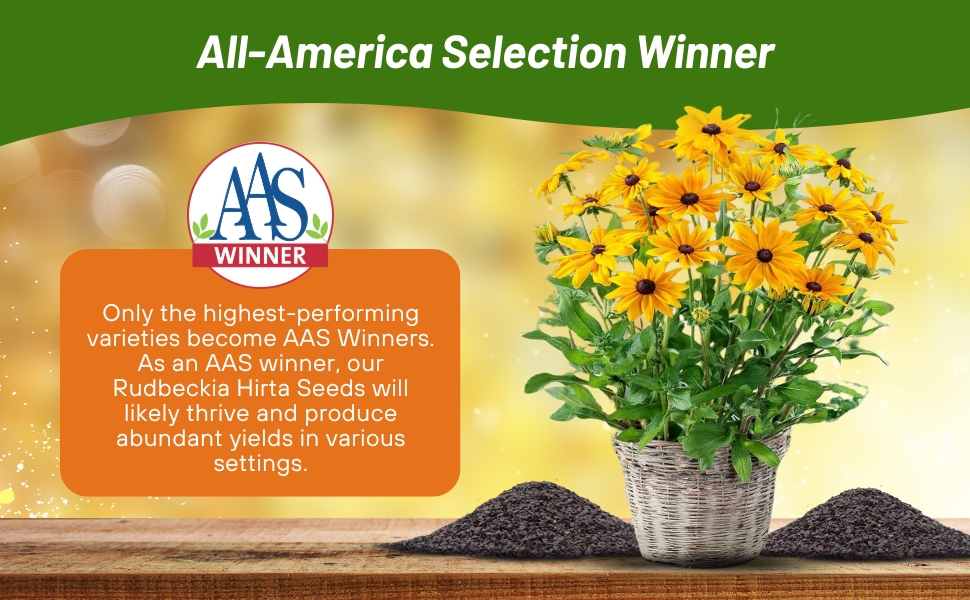


Gloriosa Daisy (Rudbeckia Hirta Indian Summer) - Here is another fabulous flower for meadows or naturalized settings! Gloriosa Daisy establishes from Rudbeckia Hirta seeds and can be sown directly outdoors, making this a popular choice for bringing color to larger areas. Indian Summer Gloriosa Daisy features long, golden-yellow petals on chocolate-black centers. It has a long-bloom season, and the butterflies and beneficial insects love it. Rudbeckia Indian Summer is easily grown in average, well-drained soils in full sun. It performs best in moist soil, but it can tolerate heat and drought. It does not like poorly-drained, wet soils.
Growing Gloriosa Daisy From Seed: Sow Gloriosa Daisy seeds outdoors any time in the late fall or as early in the spring as the ground can be cultivated. Prepare soil by loosening the top 1 - 2 inches and removing any weeds. Sow the Rudbeckia Hirta seeds into the loosened soil and rake in. Walk over the area to gently press the flower seeds into the soil. Keep the Gloriosa Daisy seeds moist until germination. The Gloriosa Daisy seedlings transplant well and should be spaced 12 - 18 inches apart. The Rudbeckia Hirta plants form a clump that will reach 12 inches in width. Deadheading prolongs the bloom season, but the plants will re-seed themselves readily if you leave a few blooms to go to seed. Watch for seedlings in subsequent years. Rudbeckia Gloriosa Daisy plants will not bloom much the first year the flower seed is sown. Subsequent years will bring many more blooms.
1995 AAS Flower Winner. A rapidly growing annual reaching three feet tall and wide. The huge blooms are 6 to 9 inches across and make wonderful ‘sunflower’ like cut bouquets. Flowers are composite (daisy) semi-double and single.
Common Questions
What are good perennial companion plants for black-eyed Susan?
Black-eyed Susans and various Rudbeckia plants beautifully enhance the vibrant hues of blue and purple flowers, such as Veronica. They also pair wonderfully with other jewel tones, including Sedum 'Autumn Joy', purple coneflowers, and New England asters.
How do you winterize black-eyed Susan?
Black-eyed Susans are resilient to winter conditions, thriving in USDA zone 3, which means they don’t require winterization. However, the plants do benefit from having their stalks cut back in the fall and being covered with a generous layer of mulch.
Can I use it as a cut flower?
Yes, these flowers are excellent for long lasting cut flowers.
Do flowers attract any pollinators?
Yes, butterflies and song birds are attracted to these flowers.
Do I need to deadhead my spent blooms?
Yes, to encourage a longer bloom season you will need to deadhead any spent blooms.
What are some good ways to use these flowers?
These are spectacular in mass plantings, perennial borders, cottage gardens, cut flower gardens, or in prairies and meadows.
Planting Directions
TEMPERATURE
70F
AVERAGE GERM TIME
7 - 30 days
LIGHT REQUIRED
Yes
DEPTH
Do not cover the seed but press into the soil
SOWING RATE
3 - 4 seeds per plant
MOISTURE
Keep seeds moist until germination
PLANT SPACING
12 - 18 inches




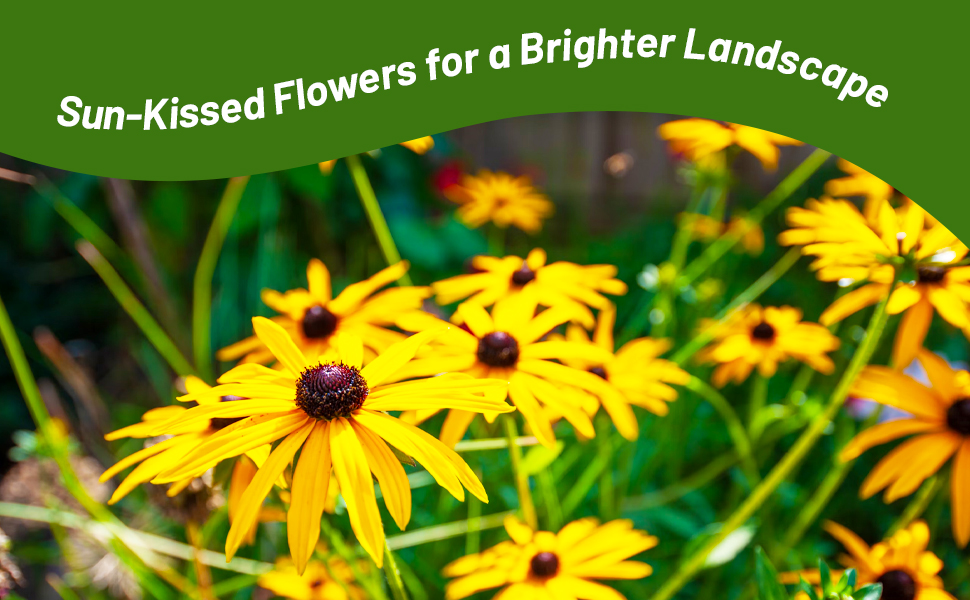
Rudbeckia (Rudbeckia Hirta Autumn Forest) - What a show stopper! Easily grow flower seeds to bring a colorful display to your border, containers, or even in mass groupings. Rudbeckia Autumn Forest flowers reach up to five inches across in some phenomenally beautiful autumn shades including yellow and shades of red and mahogany with darker centers. The flowers are great for cutting as they have strong stems that are long enough to arrange nicely in the vase. They grow quickly and bloom heavily from flower seed sown the same year and are drought tolerant plants.
How To Grow Rudbeckia From Seed: Sow Rudbeckia seeds outdoors in the spring after the danger of frost has passed. Prepare soil by loosening the top 1 - 2 inches and removing any weeds. Sow the seeds into the loosened soil and rake in. Walk over the area to gently press the flower seeds into the soil. Keep the flower seeds moist until germination. The plants transplant well and should be spaced 12 - 18 inches apart. They form a clump that will reach 12 inches in width or more. Rudbeckia Flower Care: Deadheading prolongs the bloom season, but they will re-seed themselves readily if you leave a few blooms to go to seed. Watch for seedlings in subsequent years.
Common Questions
What are good perennial companion plants for black-eyed Susan?
Black-eyed Susans and various Rudbeckia plants beautifully enhance the vibrant hues of blue and purple flowers, such as Veronica. They also pair wonderfully with other jewel tones, including Sedum 'Autumn Joy', purple coneflowers, and New England asters.
How do you winterize black-eyed Susan?
Black-eyed Susans are resilient to winter conditions, thriving in USDA zone 3, which means they don’t require winterization. However, the plants do benefit from having their stalks cut back in the fall and being covered with a generous layer of mulch.
Can I use it as a cut flower?
Yes, these flowers are excellent for long lasting cut flowers.
Do flowers attract any pollinators?
Yes, butterflies and song birds are attracted to these flowers.
Do I need to deadhead my spent blooms?
Yes, to encourage a longer bloom season you will need to deadhead any spent blooms.
What are some good ways to use these flowers?
These are spectacular in mass plantings, perennial borders, cottage gardens, cut flower gardens, or in prairies and meadows.
Planting Directions
TEMPERATURE
70F
AVERAGE GERM TIME
7 - 30 days
LIGHT REQUIRED
Yes
DEPTH
Do not cover the seed but press into the soil
SOWING RATE
3 - 4 seeds per plant
MOISTURE
Keep seeds moist until germination
PLANT SPACING
12 - 18 inches


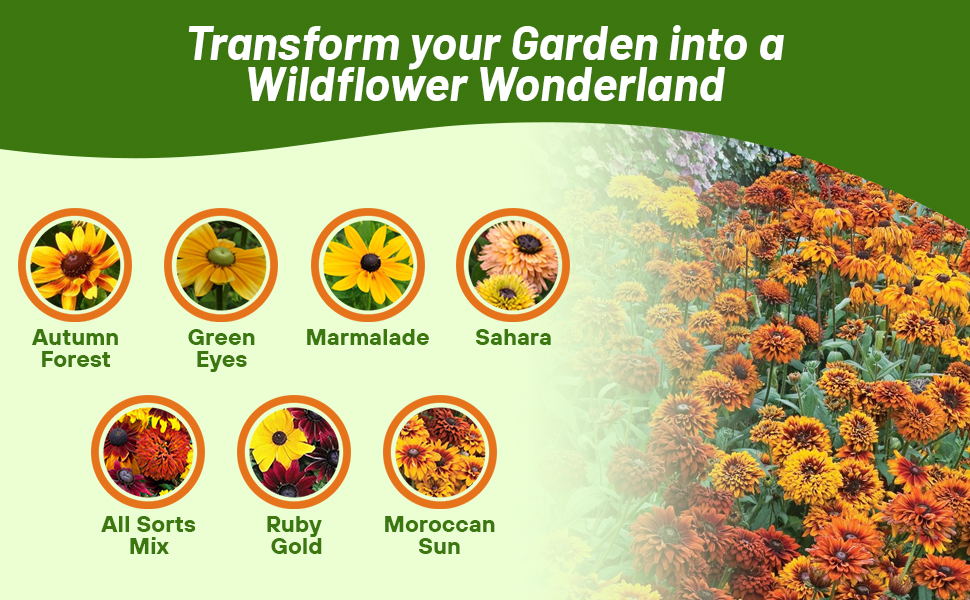
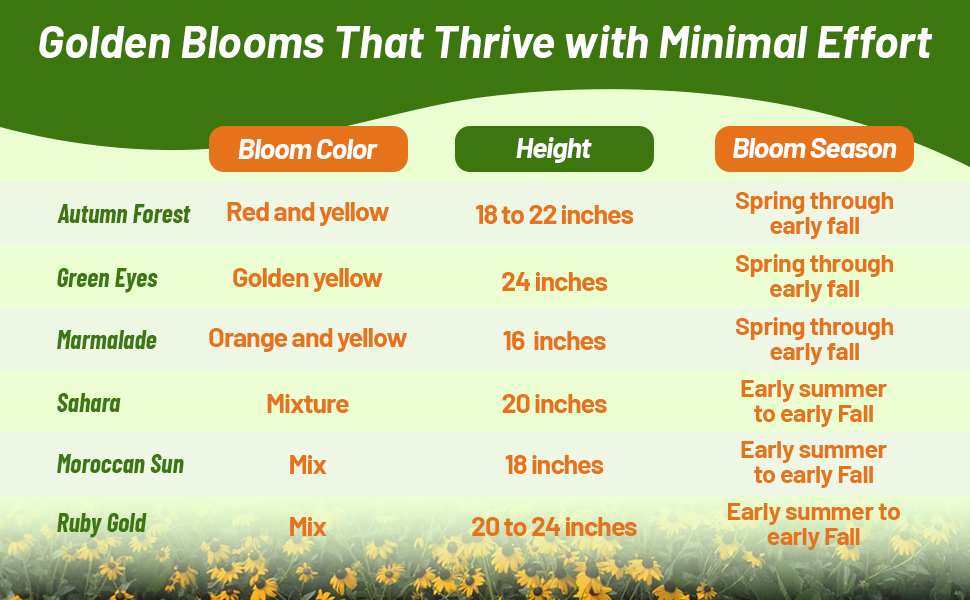

Rudbeckia (Rudbeckia Hirta Green Eyes) - Grown from Rudbeckia seeds, this variety is both attractive and very unique. Rudbeckia Green Eyes features large 4 - 5 inch blooms that are golden-yellow in color with bright olive, green cones. They are heavy blooming and make excellent cut flowers as well as being drought resistant.
Sow Rudbeckia Hirta seeds outdoors in the spring after the danger of frost has passed. Prepare soil by loosening the top 1 - 2 inches and removing any weeds. Sow the flower seeds into the loosened soil and rake in. Walk over the area to gently press the flower seeds into the soil. Keep the seeds moist until germination. The seedlings transplant well and should be spaced 12 - 18 inches apart. The Green Eyes Rudbeckia plant forms a clump that will reach 12 inches in width or more.
Green Eyes grows best in full sun and well-drained, average soil. Rudbeckia Hirta flowers can be prone to root rot and powdery mildew. Space plants apart to encourage good air flow and allow the soil to dry between watering. This popular ornamental is at home in wildflower gardens, cutting gardens and mixed xeriscape borders. It will self-sow, gently dropping its flower seeds when blooms begin to fade.
Common Questions
What are good perennial companion plants for black-eyed Susan?
Black-eyed Susans and various Rudbeckia plants beautifully enhance the vibrant hues of blue and purple flowers, such as Veronica. They also pair wonderfully with other jewel tones, including Sedum 'Autumn Joy', purple coneflowers, and New England asters.
How do you winterize black-eyed Susan?
Black-eyed Susans are resilient to winter conditions, thriving in USDA zone 3, which means they don’t require winterization. However, the plants do benefit from having their stalks cut back in the fall and being covered with a generous layer of mulch.
Can I use it as a cut flower?
Yes, these flowers are excellent for long lasting cut flowers.
Do flowers attract any pollinators?
Yes, butterflies and song birds are attracted to these flowers.
Do I need to deadhead my spent blooms?
Yes, to encourage a longer bloom season you will need to deadhead any spent blooms.
What are some good ways to use these flowers?
These are spectacular in mass plantings, perennial borders, cottage gardens, cut flower gardens, or in prairies and meadows.
Planting Directions
TEMPERATURE
70F
AVERAGE GERM TIME
7 - 30 days
LIGHT REQUIRED
Yes
DEPTH
Do not cover the seed but press into the soil
SOWING RATE
3 - 4 seeds per plant
MOISTURE
Keep seeds moist until germination
PLANT SPACING
12 - 18 inches


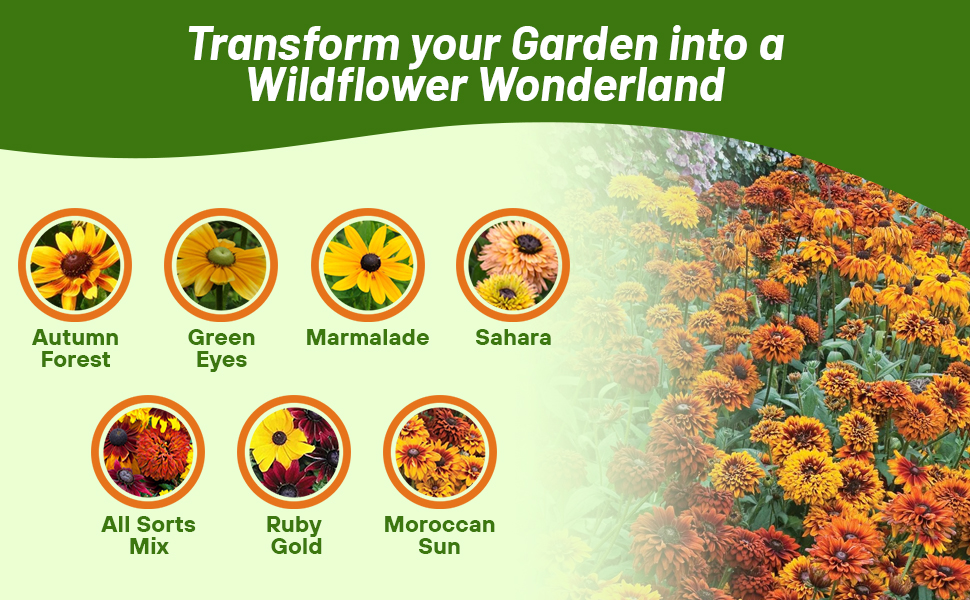
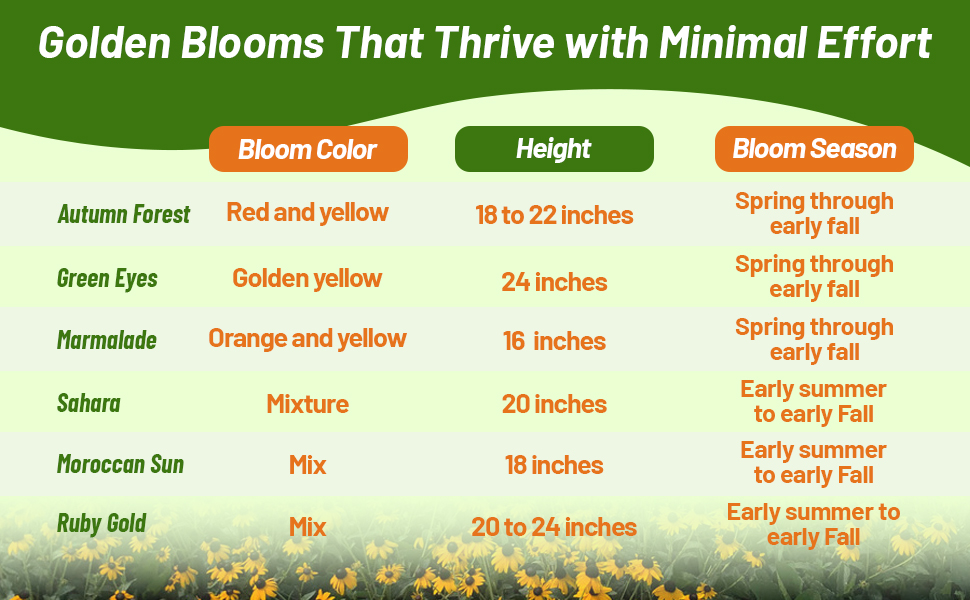
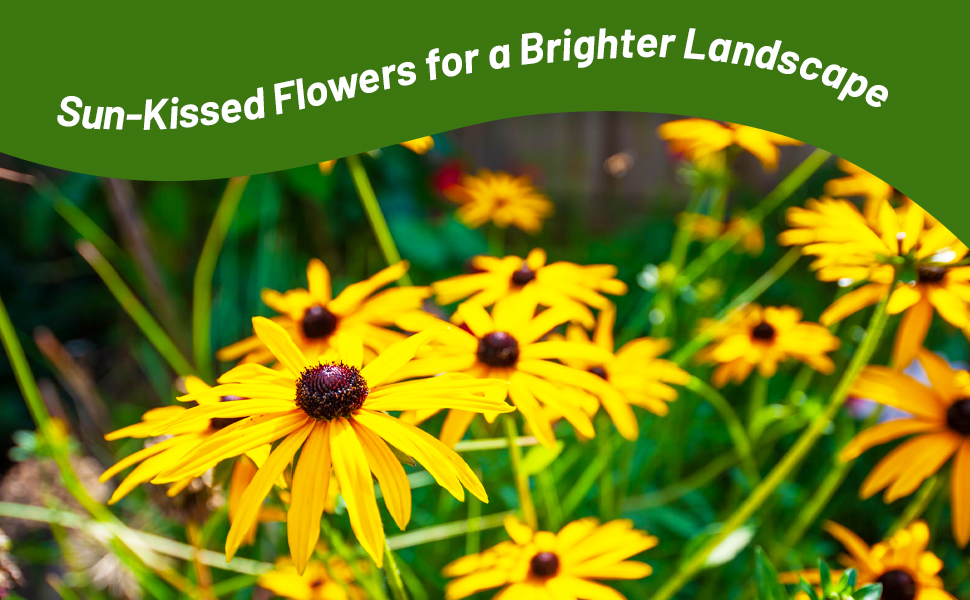
Rudbeckia (Rudbeckia Hirta Marmalade) - Make your summer garden glow with color! Marmalade Rudbeckia has large, daisy-like flowers that are orange-yellow with brown eyes. They are easily propagated by flower seeds, and their lovely color and long-bloom season will bring a brilliant glow to any flower border, container, or they are especially beautiful when planted in mass groupings. This Marmalade flower variety is also lower growing, so it works well in the front of a sunny border. They grow well in a sunny site with well-drained soil. They do like moisture throughout the hot summer and will bloom better with regular waterings; however, are they are also quite resistant to drought. In mild winter climates and in warm, sheltered beds, varieties such as Marmalade survive to become perennials with some winter protection.
How To Grow Rudbeckia From Seed: Sow Rudbeckia seeds outdoors in the spring after the danger of frost has passed. Prepare soil by loosening the top 1 - 2 inches and removing any weeds. Sow the flower seed into the loosened soil and rake in. Walk over the area to gently press the seeds into the soil. Keep the area moist until germination. The Rudbeckia plants transplant well and should be spaced 12 - 18 inches apart. The plants form a clump that will reach 12 inches in width or more. Rudbeckia Flower Care: Deadheading prolongs the bloom season, but they will re-seed themselves readily if you leave a few blooms to go to seed. Watch for seedlings in subsequent years.
Common Questions
What are good perennial companion plants for black-eyed Susan?
Black-eyed Susans and various Rudbeckia plants beautifully enhance the vibrant hues of blue and purple flowers, such as Veronica. They also pair wonderfully with other jewel tones, including Sedum 'Autumn Joy', purple coneflowers, and New England asters.
How do you winterize black-eyed Susan?
Black-eyed Susans are resilient to winter conditions, thriving in USDA zone 3, which means they don’t require winterization. However, the plants do benefit from having their stalks cut back in the fall and being covered with a generous layer of mulch.
Can I use it as a cut flower?
Yes, these flowers are excellent for long lasting cut flowers.
Do flowers attract any pollinators?
Yes, butterflies and song birds are attracted to these flowers.
Do I need to deadhead my spent blooms?
Yes, to encourage a longer bloom season you will need to deadhead any spent blooms.
What are some good ways to use these flowers?
These are spectacular in mass plantings, perennial borders, cottage gardens, cut flower gardens, or in prairies and meadows.
Planting Directions
TEMPERATURE
70F
AVERAGE GERM TIME
7 - 30 days
LIGHT REQUIRED
Yes
DEPTH
Do not cover the seed but press into the soil
SOWING RATE
3 - 4 seeds per plant
MOISTURE
Keep seeds moist until germination
PLANT SPACING
12 - 18 inches
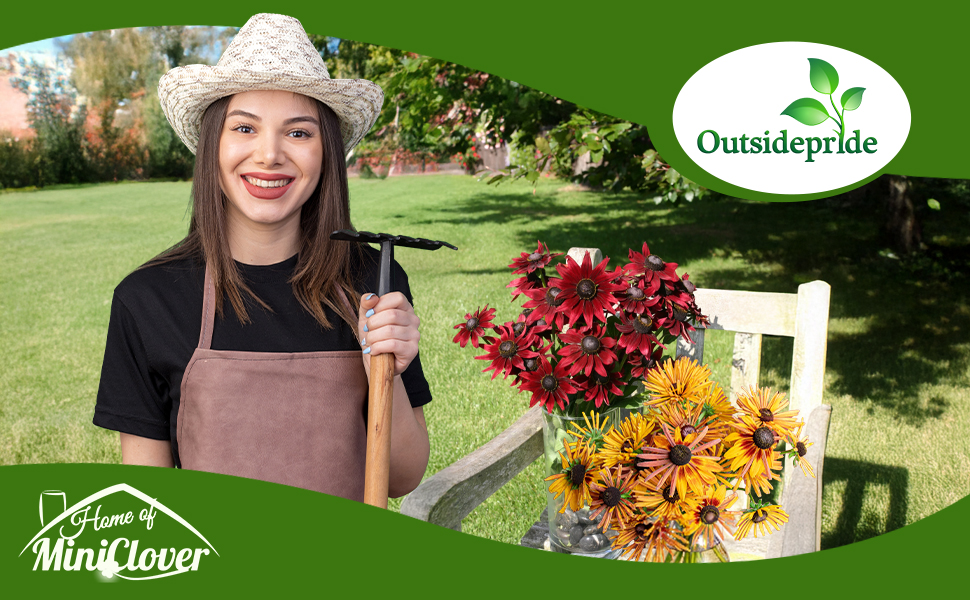


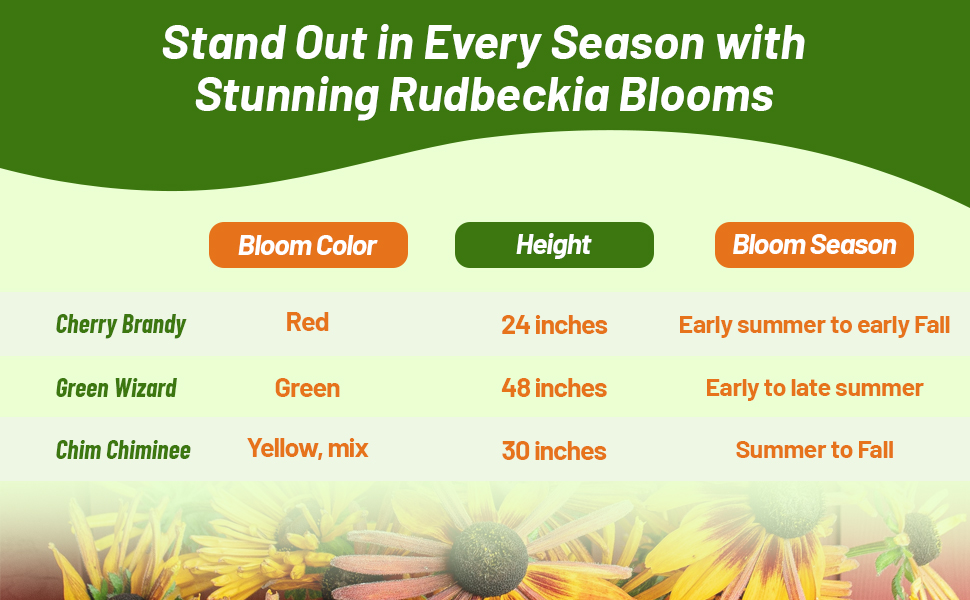

Rudbeckia (Rudbeckia Hirta Cherry Brandy) - A welcome color addition, Rudbeckia Cherry Brandy produces deep maroon red flowers with a dark chocolate center. Flowers, 3 - 4" across and blooms all summer even in poor soils. Road salt tolerant. It is easily grown in average, medium moisture, well-drained soils in full sun. Best in moist, organically rich soils. Tolerates heat, drought and a wide range of soils except poorly-drained wet ones.
How To Grow Rudbeckia From Seed: Sow Rudbeckia seeds outdoors in the spring after the danger of frost has passed. Prepare soil by loosening the top 1 - 2 inches and removing any weeds. Sow the seeds into the loosened soil and rake in. Walk over the area to gently press the flower seeds into the soil. Keep the flower seeds moist until germination. The plants transplant well and should be spaced 12 - 18 inches apart. They form a clump that will reach 12 inches in width or more. Rudbeckia Flower Care: Deadheading prolongs the bloom season, but they will re-seed themselves readily if you leave a few blooms to go to seed. Watch for seedlings in subsequent years.
Common Questions
What are good perennial companion plants for black-eyed Susan?
Black-eyed Susans and various Rudbeckia plants beautifully enhance the vibrant hues of blue and purple flowers, such as Veronica. They also pair wonderfully with other jewel tones, including Sedum 'Autumn Joy', purple coneflowers, and New England asters.
How do you winterize black-eyed Susan?
Black-eyed Susans are resilient to winter conditions, thriving in USDA zone 3, which means they don’t require winterization. However, the plants do benefit from having their stalks cut back in the fall and being covered with a generous layer of mulch.
Can I use it as a cut flower?
Yes, these flowers are excellent for long lasting cut flowers.
Do flowers attract any pollinators?
Yes, butterflies and song birds are attracted to these flowers.
Do I need to deadhead my spent blooms?
Yes, to encourage a longer bloom season you will need to deadhead any spent blooms.
What are some good ways to use these flowers?
These are spectacular in mass plantings, perennial borders, cottage gardens, cut flower gardens, or in prairies and meadows.
































